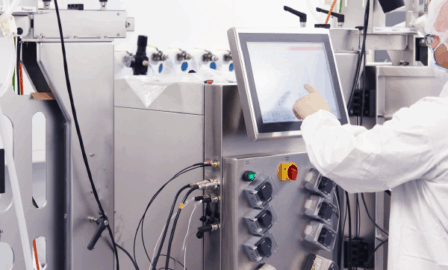Considering the Long-Term Sustainability of the Pharmaceutical Industry
As a steady-paced industry that recently experienced an unprecedented acceleration primarily due to the global pandemic, the pharmaceutical sector now stands at a crossroads. A question has arisen of whether this newfound momentum can be sustained or whether the industry is facing a deceleration. Below, we discuss the long-term sustainability of the pharmaceutical industry.
During the height of the pandemic, the FDA employed Emergency Use Authorization to expedite pharmaceutical developments, a measure allowed only in dire public health crises. As we’re moving past that initial crisis, the process of risk-based acceleration in drug development has become much less viable. Concurrently, the demand for treatments and vaccines is waning. In this ever-evolving landscape, sustainability is no longer a buzzword, but an imperative. There’s now a demand for a thorough examination of pharmaceutical optimization to maintain industry momentum as the pharmaceutical industry continues to move forward.
Examining the Macro Industry Trends
Pandemic developments as well as changes in general population needs caused a recent acceleration in pharmaceutical developments and progress. The global demand grew with the need for COVID-19 vaccines, tests, and treatments. The aging population has also caused an increase in the demand for therapies targeting chronic illnesses, such as heart conditions. These changing needs have led to an expected CAGR of 3-6% through 2025 for the pharmaceutical sector.
After adapting to the virtual landscape driven by the pandemic, the pharmaceutical industry has also experienced growth in its digital capabilities. AI systems have been able to develop novel medicines and optimize production mechanisms, saving time and energy in creating and manufacturing new drugs.
However, this industry is experiencing decreasing profits in the wake of the pandemic. Inventory of needed drugs and other products has built up, and population immunity to extremely infectious diseases, such as COVID-19, has all aided in decreasing the estimated sales by nearly 66% in 2023. Pharmaceutical companies will seek to determine how to continue their growth and profits to combat the declining sales opportunities. Taking advantage of growing technological capabilities and changing population demographics may allow companies to work against the ebb of the industry and create a more sustainable process.
The Role of Government Regulations and Patient Demands
The government is heavily involved in the regulation of pharmaceutical industry processes, maintaining influence over elements such as manufacturing and pricing. New developments in government policies have significant effects for pharma companies that will impede the momentum generated by the pandemic.
The federal government has now made it possible for Medicare to directly negotiate with specific pharmaceutical companies to determine an agreed-upon cost for certain medications. These negotiations are designed to reach a more affordable price so that patients will have easier access to necessary treatments. However, this means that certain pharmaceutical companies are losing the ability to independently control their prices.
In addition, the federal government has implemented the Inflation Reduction Act (IRA) which requires pharmaceutical companies to pay a rebate to the government if medications covered under Medicare increase their prices faster than the rate of inflation. This limits the autonomy of pharmaceutical companies in determining their pricing strategy. The IRA also may discourage pharmaceutical innovation because it allows the government to set prices that companies may not deem to be fair compensation. Innovators and investors might resist developing new therapies and products without receiving a fair value for their contributions.
Both government regulations make it so pharmaceutical companies won’t be able to simply increase prices to improve profits in this post-pandemic decline. Drug prices are also being driven down because of patient demand for greater affordability; in fact, some believe that the cost of prescription drugs is not affordable or reasonable. Mark Cuban, for example, created the Cost-Plus Drugs pharmacy and has made headway in reducing drug prices. After drug patents expire, his company manufactures a generic replication with a much lower price tag.
Companies like Cost-Plus Drugs, as well as growing patient demand and government encouragement for affordable medication, are all working to push drug prices down as pharmaceutical companies are already struggling to maintain existing profit levels.
The Need for Optimization in Pharmaceuticals
Because of the government regulations and patient demands that are putting downward pressure on pharmaceutical prices, companies must seek new strategies to accommodate the shrinking demand for acute medications and the resultant decline in profitability. However, supply chain challenges are also creating setbacks.
Supply chain pressures make it extremely difficult to stay on pace with fluctuating patient demand and cater to numerous business stakeholders. The pharmaceutical supply chain has frequently experienced inventory management difficulties among other challenges, making it difficult to keep up with the ever-changing patient demands and maximize potential profit. There has been a consistently low volume of materials available that are necessary for drug production, and this can slow down the manufacturing process.
Pharmaceutical companies are under constant pressure to meet strict quality standards and adhere to regulatory guidelines. Any supply chain issues can cause costly setbacks and risk patient safety, so optimization of this process to eliminate inefficiencies is necessary for the success of pharmaceutical companies.
How Pharmaceutical Companies are Responding
Many pharmaceutical companies are exploring methods of cutting costs and reducing supply chain pressures to boost profit margins and production efficiency.
Supply chains are becoming more digital and automated as an effort to combat inefficient supply chains. The key to its success is the visibility that it provides; companies can keep track of inventory and immediately notice setbacks or delivery interruptions. Adding automation to production and packing facilities also increases distribution speed and minimizes product and packaging errors, which creates a more profitable and efficient product.
Pharmaceutical companies are also embracing the idea of lean, efficient supply chain practices. Companies are increasingly investing in logistics management, demand forecasting, transportation monitoring, and mutually beneficial supplier partnerships that may lead to discounts and other cost-saving opportunities. The pharmaceutical industry is becoming even more conscious of possible inefficiencies that could undermine future profitability.
Looking into the Future: Sustainability of the Pharma Industry
Without profitability strategies, pharmaceutical profits will likely continue to decline as vaccine and acute treatment demands continue to push downwards. Supply chain challenges, if not optimized, will continue to undermine the efforts of pharmaceutical companies to meet previous profit margins.
The build-up of herd immunity and the declining severity of illnesses such as COVID-19 have driven demand for vaccines and treatments downward, but finding ways to cut costs and optimize existing processes may help pharmaceutical companies regain previous momentum.
To learn more about innovative strategies for encouraging pharmaceutical development, contact our life sciences experts today.
Subscribe to Clarkston's Insights
Contributions from Sam Weitzel



